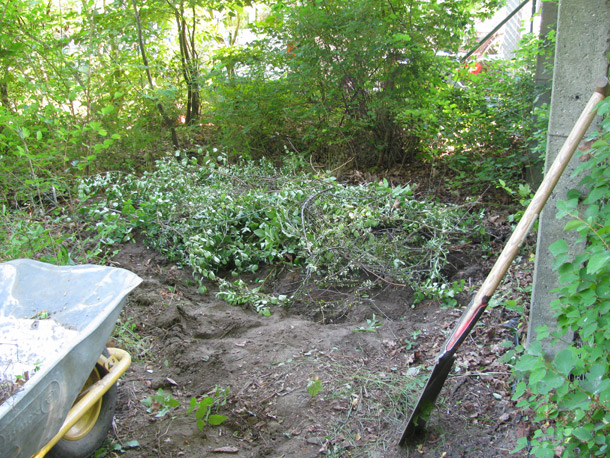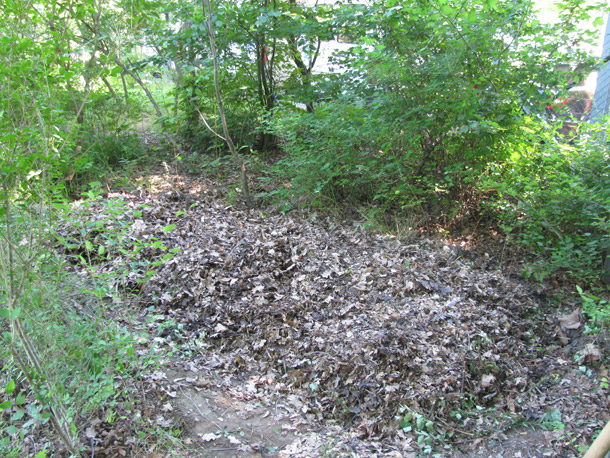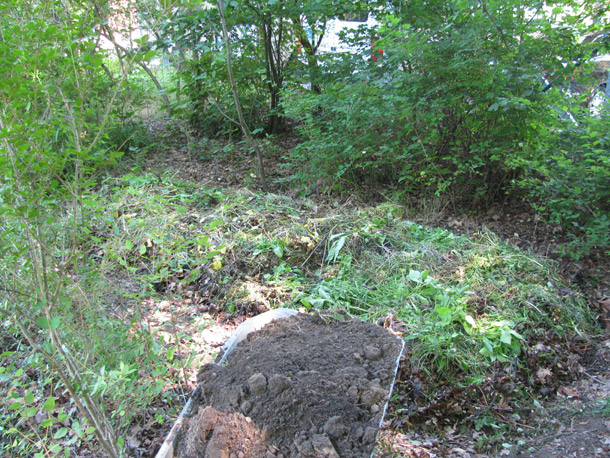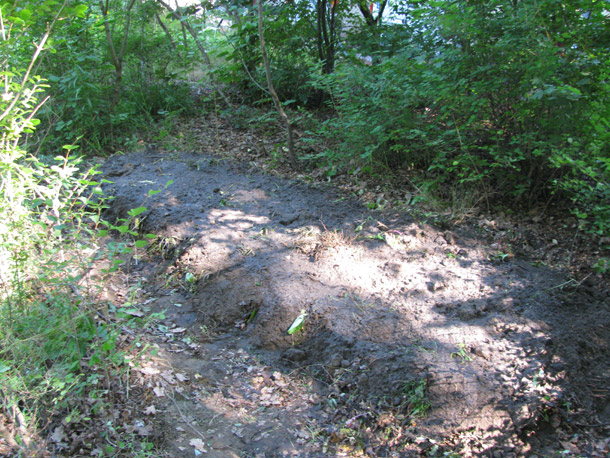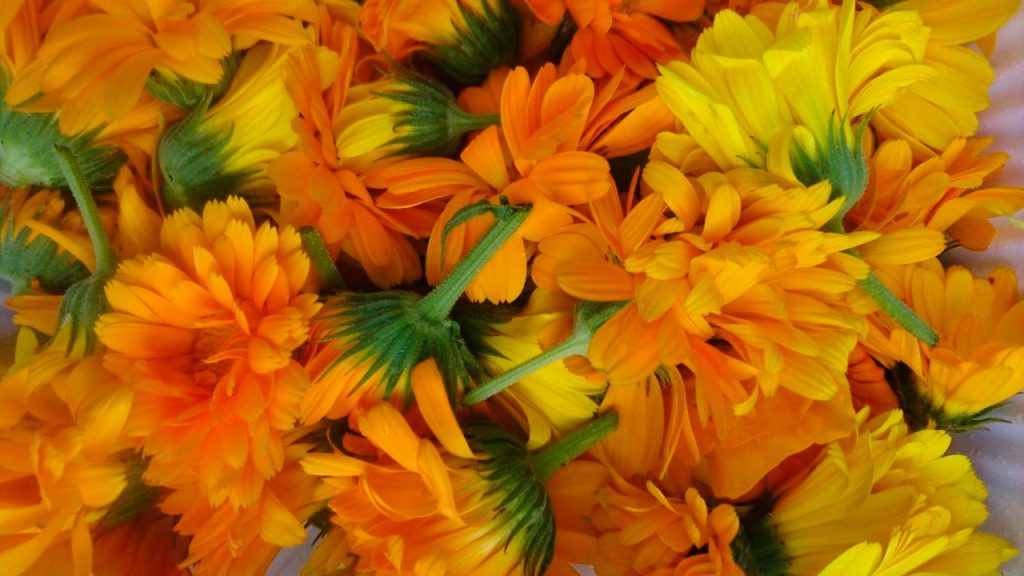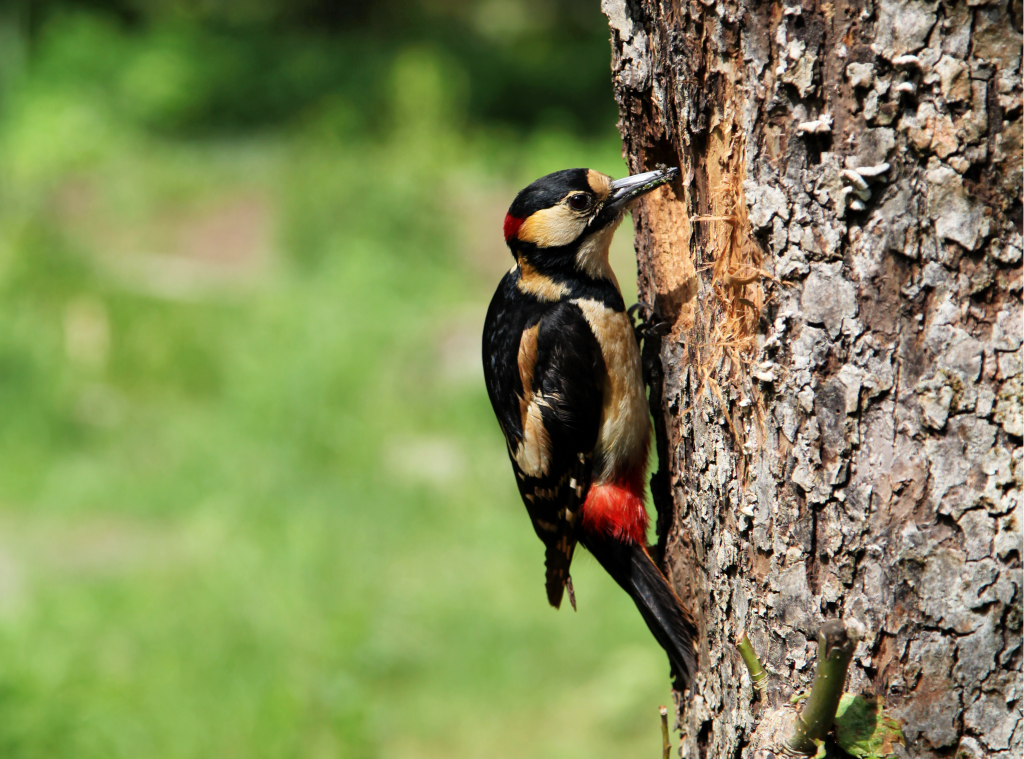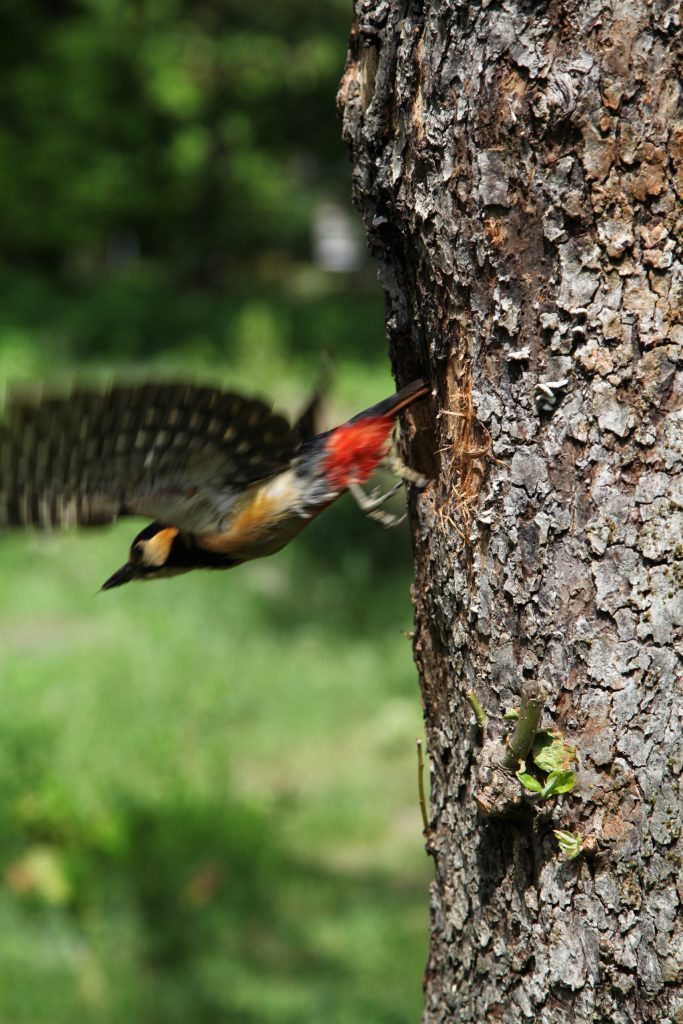We’re well underway with our first compost pile. The compost pile design (yes, one can design a compost pile!) was loosely based on a chapter on compost in John Jeavons wonderful book How To Grow More Vegetables.
One ‚recipe‘ for compost is to layer 45% of more mature, dry material such as leaves (but not oak leaves!), old grass, dry weeds, and then layer another 45% of fresh material (freshly weeded weeds, kitchen wastes). The last 10% should be soil – this keeps the compost from smelling but also helps with the composting process. According to Jeavons, this recipe means a hotter pile with which you’ll end up with usable compost in at least 3 months. However, he writes, you lose a lot of carbon with a hotter pile, around ‚1/3 to 1/2 the cured organic matter a cooler compost pile‘ contains.
A cooler compost pile (to those readers who, like me, didn’t know this: a compost pile gets hot from the decompostion process) means a lot more dry material and a lot less fresh green material. This means the pile breaks down more slowly.
So where does our Stadtgarten compost pile fit into all this? Well, let’s just say that all this theory… is well and good in theory. We have probably used too much green material, and the heavy rain throughout the last month has meant our pile is probably a bit soggy, but we can at least tell you how it was built (partially based on Jeavons‘ book).
1. First the ground underneath the soon-to-be pile was loosened quite deeply with a spade.
2. Then a layer of branches was put on top. The loosened ground and the branches are for drainage. The branches were watered. Watering helps the composting process.
3. Then a thicker layer of leaves and other dry material was added on top of the branches. More water was added.
4. Then the greens were added. More water!
5. Finally, a thin layer of soil was put over the top, and then the compost was watered again.
6. Each time more dry and green material has been added and the layer gets a bit thick, we put a thin layer of soil over the top.
Only two important rules to note with the compost:
– Never put cooked food or meat on the compost. We want earthworms in the pile, not rats!
– Water the compost regularly along with watering the plants.
We’ve made some mistakes (hope you didn’t notice any oak leaves in the picture above) but we’re looking forward to some healthy soil in a few months!